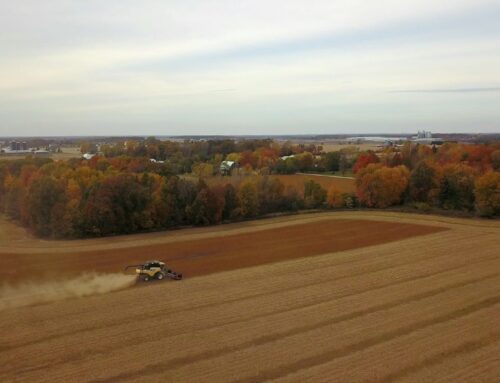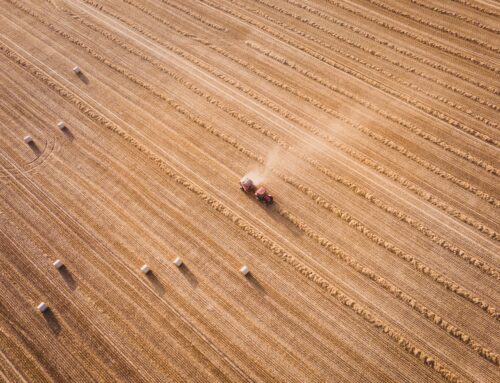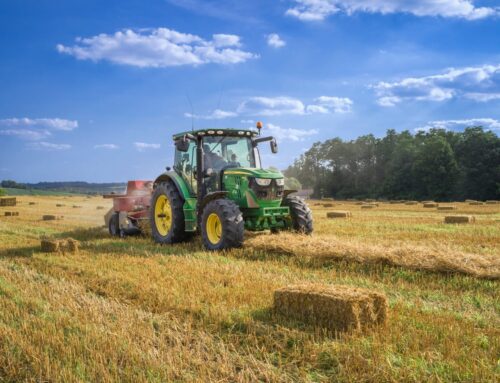With $32.5 trillion (and counting) in national debt, taxpayers cannot afford to shovel subsidies to those who do not need them. Whether it is defense spending, infrastructure, or farm income subsidies, there is no room for wasteful federal spending. Unfortunately, with a farm bill on this Congress’s horizon, many agribusiness lobbyists are looking to bring home the bacon for their favored special interests. Instead of simply forking over more money, Congress needs to rethink the farm bill.
As record-hot temperatures and drought plague much of the country, much of the U.S. is feeling the heat. So are crops—everything from corn to wheat, with hundreds of crops and livestock in between. At the same time, lobbyists are pointing to lower crop prices and high input costs as reasons why certain crop producers “need” more subsidies. It’s a song and dance we’ve heard before.
Back in 2012, it was a similar story with Congress debating the farm bill while crops withered in dry soil. Supporters of high farm subsidy spending clamored for Washington to quickly adopt a new farm bill (with a $957 billion price tag) to help farm businesses “survive” the drought. This was despite the fact that only 0.2% of the bill’s price tag would be used to retroactively fund and extend four drought-related livestock and nursery crop disaster programs.
In Washington, history is repeating itself only with a higher price tag ($1.5 trillion) and less acknowledgement of reality. Also, to date, there has been no actual bill publicly released by the House or Senate.
The truth is agricultural businesses already have a generous safety net that addresses the drought (and other risks like floods, freezes, disease, market volatility, etc.). Taxpayers step in to subsidize certain farmers’ crop insurance premiums to the tune of 60 cents for every $1 of coverage. That adds up to approximately $10 billion each year, not to mention FY23 when the Congressional Budget Office (CBO) (Congress’ nonpartisan spending scorekeeping arm) projects a record one-year cost of $16.3 billion thanks to last year’s drought. There is also an array of disaster programs authorized in the farm bill, not to mention $20 billion in recent ad hoc payments as well. Disaster programs in the farm bill include:
- Livestock Indemnity Program – pays when ranchers lose livestock, or sell at a reduced price, because of drought.
- Livestock Forage Disaster Program – compensates for feed costs due to lost grazing acreage.
- Tree Assistance Program – pays for damages to wells, trees, as well as vines and bushes.
- Emergency Assistance for Livestock, Honeybees, and Farm-Raised Fish Program (ELAP)
- Noninsured Crop Disaster Assistance Program (NAP) – for crops not covered by federally subsidized crop insurance.
- Many more acronyms, err, programs that cover losses from drought.
In our recent Paying the Price report, we warned that climate risks will only further increase taxpayer costs of programs like these in the future. Showering more subsidies on certain crop producers will not make it rain. Nor will it decrease high costs for fertilizer and other inputs.
Nebraska farmers like Scott and Skyles Kinkaid have been dealing with severe drought conditions for three straight years. Unlike farm lobby groups asking Congress for disaster aid, higher government-set minimum prices, profit margin guarantees, and other subsidy hand-outs, Scott believes rural communities, the land, and beginning farmers would be better off without taxpayer subsidies. Listen to Scott and Skyles tell their story to our Budget Watchdog AF podcast listeners earlier this year.
Other farmers like Kevin Fulton have been profitable despite drought and the agricultural sector facing rising input costs. Kevin reduced costs by innovating and diversifying his operation. Earning income from the market—instead of the federal government—can lead to long-term certainty for farmers and improve opportunities for the next generation of agriculture, all while saving taxpayer dollars.
This week, a diverse set of 13 groups—representing environmental, consumer, farmer, and taxpayer interests—joined forces to call on Congress to rein in wasteful farm subsidies. Instead, we said the 2023 farm bill must promote resilience, instead of dependence on federal farm subsidies.
Take the federal crop insurance program, for instance. Some producers receive no federal crop insurance subsidies whatsoever. Yet, they are profitable and successful. Others, like large-scale agribusinesses spanning multiple U.S. states, receive more than $1 million in crop insurance premium subsidies—every year. Crop insurance subsidies are currently unlimited. Yes, you read that right. The program has no common-sense guardrails to cap annual subsidies or ensure that millionaires and billionaires are not raking in subsidies at taxpayer expense. Worse yet, taxpayers do not know which individuals are receiving federal subsidies.
Improving cost-effectiveness, transparency, fairness, and responsiveness of federal farm safety net programs should not end there. Reforms are needed in other farm commodity, disaster, and other programs in the next farm bill as well. Problems with waste, fraud, and abuse in farm subsidy programs are not a new phenomenon. The Government Accountability Office (GAO)—Congress’ nonpartisan investigative arm—has been sounding the alarm for decades.
Despite this, the U.S. Department of Agriculture Inspector General recently detailed high improper payment rates for certain agriculture disaster and ad hoc programs. Instead of adding more fuel to the fire, unnecessary and duplicative payments should end. CBO estimated taxpayers could save more than $75 billion over the next decade if certain farm subsidies are reined in.
If the 2012 drought taught us anything, dollars alone will not solve our problems. A farm safety net, however, that is focused, fiscally responsible, and fosters resilience can help mitigate increasing climate risks while setting up farmers for future success. In 2012, our nation’s debt was $16 trillion—half of what it is today. Instead of showering more subsidies on those who don’t need taxpayer support, we need real solutions to rein in our debt and help farmers succeed.











Get Social